So Dark the Night (1946)
Directed by: Joseph H. Lewis
Written by: Aubrey Wisberg, Dwight V. Babcock, Martin Berkeley
Starring: Ann Codee, Eugene Borden, Micheline Cheirel, Steven Geray
USA
AVAILABLE ON BLU-RAY: 18th February, from ARROW ACADEMY
RUNNING TIME: 71 mins
REVIEWED BY: Dr Lenera, Official HCF Critic
Renowned Paris detective Henri Cassin takes his first holiday in eleven years at a small inn in the French countryside. There, he falls in love with the innkeeper’s daughter Nanette. Despite Nanette having a farmer boyfriend called Leon to whom she’s been promised since the two of them were children, Henri proposes to Nanette and she accepts. However, on the evening of the engagement party, Leon bursts in to threaten Henri, after which he leaves with Nanette running after him. The next day both of them seem to have disappeared, and it seems possible that they eloped, but then Nanette’s murdered body is found. Henri must try to find the killer despite being stricken by grief….
I do love twists, and So Dark The Night has a doozy near the end which I’m not going to reveal, but which will be the reason for me leaving much of the second half of the film in vagueness. Saying that, if you’re the type to pick up on stuff really easily, I recommend that you skip paragraph five [the one just below the third pic]. Thankfully there’s much else about this film that’s of interest to write about. It was director Joseph H. Lewis’s immediate follow-up to 1945’s My Name Is Julia Ross, a great little cheapie melding murder mystery and Gothic romance [and a touch of horror] that was this filmmaker’s first major success. I posted my review of the film, released by Arrow, yesterday, so I was very intrigued to look at this film afterwards. It bears many of the hallmarks of the proceeding picture, such as its very artful filming style which is sometimes used to help conceal the low budget [such as the large amount of close-ups]. and a main character who finds him or herself in an environment very different from the one he or she’s used to and becomes embroiled in intrigue and even murder. But this one’s far less film noir in style and is actually rather sunny and even happy at first, while it seems like we’re watching a slightly offbeat romance for some of the time, but don’t worry, bodies do start piling up as do the surprises. And, despite being obviously given a slightly [but only slightly] higher budget to work with this time, Lewis seems to make things more artificial this time, what with its overly quaint depiction of Paris and its French village which, even ignoring the fact that you only see a few buildings and a rather expressionistic bridge, seems deliberately unreal – but this kind of makes sense in a way [you’ll see what I mean].
Our main protagonist is introduced in a rather comical manner, his superiors talking about him, in particular what a good and dedicated detective he is [“he would turn in his own mother if he was convinced of her guilt”]. We hear that he’s meant to be taking a vacation, but has decided to walk around Paris for the first day he’s supposed to be on leave instead. I was immediately impressed by Austro-Hungarian [now Ukrainian] actor Steven Geray, somebody whom I knew from memorable small roles in Gilda and Spellbound, in the lead role, and got to thinking that this character, as played by Garey, would have made for a great TV detective series. He’s very unassuming with a gentle manner and voice, but you also get the sense that he has great intelligence and patience – and just the slight sense that he could actually be very tough when it’s required – and despite visiting this little village to relax, he soon finds himself under threat. Even as he arrives, he’s observed by Nanette, in a scene which is a good example of the way that Lewis often doesn’t like to do things ordinarily, what with the odd angles and strange choice of shots, like the cuts to various parts of Henri’s taxi, seemingly from the point of view of Nanette – after which we then go through a wall on the outside of the inn and seamlessly end up in a room [something repeated slightly differently later], something that would been quite hard to set up in the short space of time. Later on we even get a shot from inside a fireplace. Lewis and his cinematographer Burnett Guffey are sometimes downright experimental, but this stylisation doesn’t tend to shout “look at me” at the top of its head, it seems an organic part of the film.
The budding romance, while it may test the patience of some viewers expecting bad things to happen early on, has its interesting aspects, especially in its introducing of a class element. Nanette’s mum encourages Nanette to basically throw herself at this rich and famous visitor so Nanette can have the life that she never had, while her dad dislikes this upstart and prefers his daughter to marry her farmer beau Leon. As for Nanette, she seems to be interested in Henri because of where he’s from more than anything else, at least initially. After all, Henri, who possibly never had much time for women in Paris. does seem to be quite a few years older – yet despite this kind of relationship sometimes seeming a bit ‘off’ to our modern eyes, there’s a real sweetness to his growing love for her even if you’re never really sure about the object of his affections. She goes off with Leon and says that her and Henri mean nothing and they kiss, but the camera focuses on her face for just a second or two longer than normal so we can see that she’s thinking of something else – probably Henri. Leon then surprises Henri and Nanette kissing in a field and tells Henri to stay away. He fails to do so and proposes to Nanette – but at the engagement party the two run outside and never come back, leaving poor Henri in a terrible state, neither eating or sleeping for several days.
It gets even worse when Nanette is found strangled to death, and more bodies follow. Who’s the culprit? Even though I’m one of the worst movie detectives in the world so didn’t have a clue, I doubt you’ll guess. Perhaps the most obvious suspect is Bridelle the maid who seems to want Henri for herself . Henri has his work cut out for him because the murderer seems to have destroyed all traces of his or her presence except for one shoe print he or she failed to notice had been left, though he or she is brazen enough to send notes such as “you will die next”. As with My Name Is Julia Ross, the short running time [which is only six minutes longer than that film] ensures that the pace is tight and scenes are very quick which is one reason that I think that some younger folk, brought up on the more frenetic style of much of modern cinema, would enjoy these Lewis films. And eventually it becomes apparent that Lewis is returning to the theme of a murderous psychopath, something which was a part of the earlier film – but here, his look at the theme, even if maybe a little superficial to some modern viewers, is more compassionate – and yet he still stages some scenes when the killer is quite frightening. Lewis and screenwriter Martin Berkeley and Dwight V. Babcock pull off quite a lot in the final reel and I reckon many viewers would have found it hard to know what to think. Although Hangover Square had done the sympathetic murderous psychopath the previous year, it was made easier by letting us know who the killer was right away.
While certainly not all French, most of the leading cast members are certainly European, which is quite unusual for the time and is certainly preferable to lots of Americans trying French accents, though the device of having some characters slipping into un-subtitled French doesn’t really work. And sadly the acting side of things does let things down a bit. While Geray is quite brilliant, Micheline Cheirel [Nanette] is rather inadequate and most of other performers tend to be either bland or to play their roles one-note. This certainly doesn’t ruin things, and it would no doubt have been impossible for Lewis to hire top-grade European cast members anyway, but two or three fairly major scenes would have benefited from a few cast members adding some more layers to their characters. But you do get to see – is it him? – yes it is – Brother Theodore aka Reuben Klopek from The Burbs as the village hunchback! And this film is so well shot throughout and is actually rather well constructed visually. While there’s less of the noir playing with shadows and black in this one, Lewis and Guffey repeat their predilection for having us watch characters through windows and bars, a device that would work as a distancing effect if we weren’t so involved in what was going on. There’s less claustrophobia here due to slightly larger sets and the fact that we go outside on a few occasions, but a great deal of attention was still paid to the visual aspect. Sometimes even clues are planted, clues which will only become apparent when the film’s climax comes along and you’ll probably wander why you didn’t work it out before even though it would have been hard to do so. One involving water [that’s all I’m going to say] is a very clear metaphor indeed. Lewis was able to higher a bigger and better composer for this film, and Hugo Friedhofer does a good if not spectacular job, underplaying the romance when others may have piled on the strings, and his fragmented, un-melodic approach being quite appropriate in the end.
Arrow have released a fine little pair of ‘B’ movie gems with this and My Name Is Julia Ross, and I got quite a lot out of both of them. But, despite my ongoing love for Gothic trimmings [give me a creepy old house full of secrets and people wandering about at night while it thunders outside, and I won’t care less if the plot’s awful], I think that So Dark The Night is the superior film, a minor classic of its kind which probably deserves to be better known than it is. I want to compare it to a few other films but I haven’t done so because I’ve had to be quite evasive during this review, but there’s really quite a lot going on it, both visually and thematically. By the end, even though the climax was unsurprisingly rushed, I felt both disturbed and moved in a way that I didn’t expect. And as for Lewis – three films in and I’m a fan.
I didn’t think that So Dark The Night looked quite as good as My Name is Julia Ross in its similarly 2k restoration by Sony, but that might be because I’m getting increasingly fussy about such things. There’s some very uneven grain build-up in a few places, and a few shots looked digitally enhanced, as if Sony felt the need to beef them up a little to how they thought they may have looked in 1946. Those optical dissolves from scene to scene obviously presented a difficult challenge which wasn’t entirely overcome. But let’s face it – twenty, even ten years ago, fans of this film would probably never have dreamed that it would get a full restoration and ever look as clear and detailed as this. For first comers to the film, just remember that you’re about to watch a very cheap film from 1946 and you shouldn’t be disappointed.
This time we have two people doing the audio commentary. Glenn Kenny and Farran Smith Nehme don’t seem to acknowledge each other much until some time in, but they create a very balanced track, Glenn talking more about Lewis [and talking too fast when quoting from books!] while Farran does the [nicely brief] cast biographies until they both can’t stop discussing the visual style of the film and the way it’s constructed, including some clever foreshadowing even I missed. They mention a film with a similar twist the same year – well, I probably know a bit more about old movies than the average person but I certainly don’t consider myself an expert. Hardly a light listen, but still very good, and if unlike me you weren’t convinced of the film’s many qualities then you may have your mind changed. So Dark… Joseph H. Lewis at Columbia is a very good look at the film and its director, Imogen Sara Smith [discussing much older movies seems to be more of a male ‘thing’ than a female one, but I do like the way Arrow are featuring more female writers in their special features] covering quite a lot over just 20 minutes, and even including a great story about Lewis turning down The Jolson Story which could have catapulted him into the big time, in favour of completing So Dark The Night which he obviously had a greater affinity with. She also points out some disturbing implications of one scene which I failed to notice.
A clever and stunningly shot thriller that ends up evoking quite complex and contradictory emotional responses from the viewer – Highly Recommended.
SPECIAL EDITION CONTENTS:
*High Definition Blu-ray (1080p) presentation
*Original uncompressed mono PCM audio
*Optional English subtitles for the deaf and hard-of-hearing
*Audio Commentary by critics Glenn Kenny and Farran Smith Nehme
*So Dark… Joseph H. Lewis at Columbia – Critic Imogen Sara Smith provides the background and an analysis of the film [20 mins]
*Theatrical trailer
*Reversible sleeve featuring original and newly commissioned artwork by Tonci Zonjic
FIRST PRESSING ONLY: Illustrated collector’s booklet featuring new writing on the film by critic David Cairns”

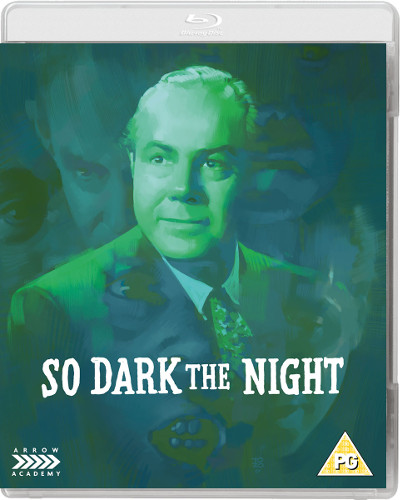

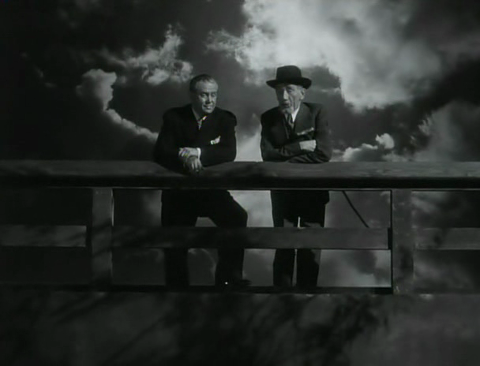



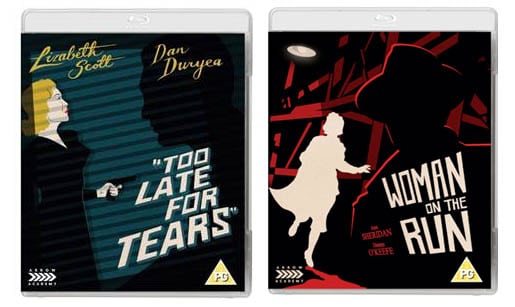
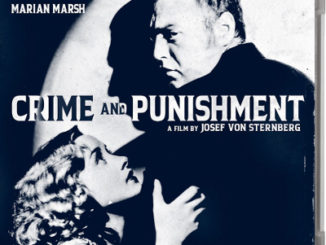
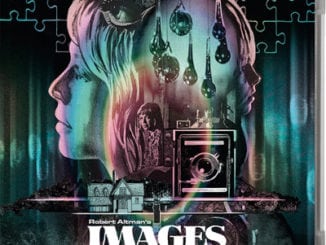
Be the first to comment